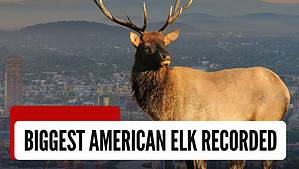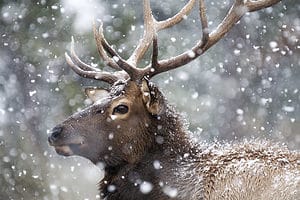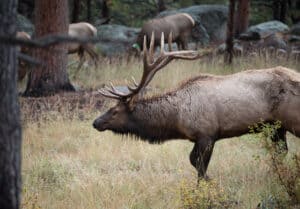There are about a million elk in North America alone, making good tourist attractions during the fall mating season. These herbivores are about five feet (1.52 meters) tall at the shoulders and have large antlers as heavy as 40 pounds (18.14 kilograms). These deer can weigh up to 1,000 pounds (453.59 kilograms).
Elk are strong animals, capable of incredible feats. Their antlers are strong and sharp, and their hooves are dangerous to whomever they kick with them. So, what about their teeth? This article dives into the features of the majestic elk’s teeth.
What Kind of Teeth Do Elk Have?

Deer have two sets of teeth as they mature; temporary baby teeth and permanent ones.
©iStock.com/RCH1
Elk are deer and, like most deer, have two sets of teeth: temporary calf teeth and permanent ones. This is identical to humans, and this similarity is also extended to the number of teeth types. Elk, like all deer, have incisors, canines, premolars, and molars.
Adult teeth cannot be replaced with new teeth if lost, although lost baby teeth could be replaced by permanent teeth. However, it’s rather unlikely for an elk to get its teeth knocked out, a higher probability is wear. Over time, their teeth size wear, and old elks might have no teeth at all.
Calf Teeth

Calves do not have molar teeth.
©Karlie Butler/Shutterstock.com
Calves, or fawns, are weaned as early as two months after their birth, but they start to develop calf teeth earlier. A calf can grow teeth from birth and incorporate grass into its diet alongside its mother’s milk after about three weeks.
Calf teeth consist of small and delicate incisors, canines, and premolars, but no molar teeth. Over the years, they add more teeth and replace old ones with permanent and sturdier ones. Elk have all their adult teeth after about two and a half years.
How Many Teeth Do Elk Have?
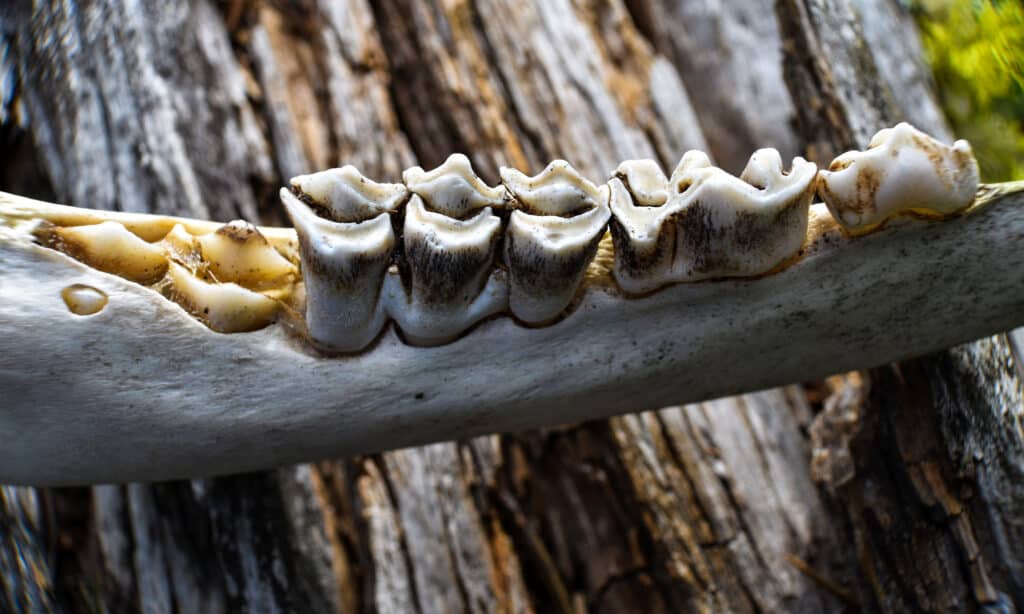
Adult elk have 34 teeth.
©Diane Isabel/Shutterstock.com
Adult elk have 34 teeth, unlike most deer, which have 32. Another deer that shares this unique dentition is the reindeer.
Lower Incisors
Unlike horses, elk do not have upper front incisors. However, they have incisors in their lower jaw. All species of deer have eight incisors, which are often long and flat. Elk use their incisors to grab onto and pull food into their mouths. Their pointy antlers cannot perform this task and certainly not their hooves.
In the roof of the elk’s mouth is a tough fleshy plate that takes the place of upper incisors. This plate, otherwise called a dental pad, works as a hard surface for the teeth to cut food. The dental pad also makes it comfortable for elk to grind with their molars.
Upper Canines
The presence of two upper canines is one of the distinctive features of the elk among the deer species. According to reports, these canine teeth are ivory, the same material as the long tusks of wild boars, walruses, and elephants.
The canines are the only ivory teeth in the elk’s mouth, an item coveted by many worldwide because of its rarity. The canines can be used to determine the age of an elk as teeth wear over the years and grow shorter.
Premolars
The premolars on the lower jaw are separated from the incisors with a small gap called a diastema. Adult elk have 12 premolars, six on the upper and lower jaws. Like all the teeth in the lower jaw of the elk, they are made of enamel.
According to a news account, biologists from the Arizona Game and Fish Commission stated that the age of an elk can be told from the premolar. Premolars for elk about a year old have three cusps, but as they get older than two years, these teeth wear down to two cusps.
Molars
Molars begin to grow in elks that are about 18 months old. These teeth come immediately after the premolars and are 12 in number, with six on either jaw. These inner and robust teeth have ridges like the premolar and are quite effective for chewing food.
What Do Elk Use Their Teeth for?
Elk are mostly herbivores and have sometimes been identified as omnivores, with teeth strong enough to chew on twigs. However, on extremely rare occasions, elk have been known to feed on little birds when their usual food sources are scarce. Elk use their teeth for the following:
Collecting and Chewing Food (Twice)
Elk are ruminants, similar to cows. These large deer have four-chambered stomachs, which help them store food for later periods. An elk’s diet includes grass all year round and drier options like tree barks and twigs in the winter. The large deer use their incisors and dental pads to cut bits of grass before chewing.
According to the Washington Department of Fish and Wildlife, elk first chew their food to break down and swallow. This partly chewed food is stored in the rumen. Afterward, the food is regurgitated and chewed a second time before swallowing again. Digestion occurs in the second stomach before passing into the other two stomachs and the intestine.
To Scare Predators or Competition: The Biting Threat
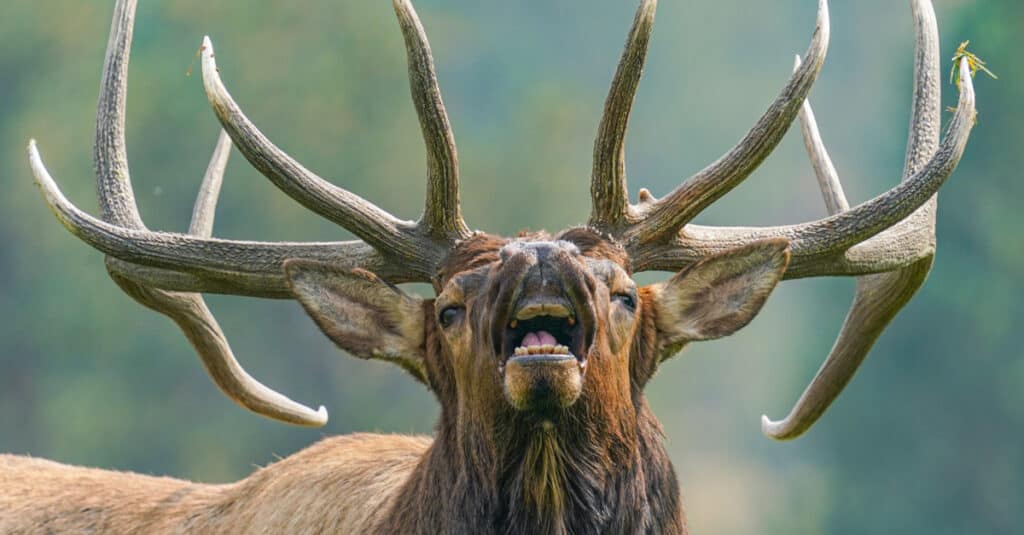
Elks scare off predators or competition by revealing their canines.
©Cornelius Doppes/Shutterstock.com
Elk are plant eaters and are, thus, less likely to attack a predator or threat with their teeth. Instead, they have large and sharp antlers with which they attack. However, the elk’s greatest defense is its speed. According to the National Park Service, an elk might try to scare its predator or competition by grinding its teeth and revealing its canines before attacking or fleeing.
Parks Canada states that elk can get aggressive toward humans during fall and spring. Bull elk are aggressive during the mating season, which spans August to September, when they have to fight other elk to win the right to cow elk. Between May and June, known as the spring calving season, cow elk can also become aggressive to defend their young.
Up Next:
Deer Teeth: Everything You Know To Know
The 10 Largest Deer in the World
Discover the Largest Elk in the World
The photo featured at the top of this post is © iStock.com/DimitrisTimpilis
Sources
- National Forest Foundation, Available here: https://www.nationalforests.org/blog/ten-things-that-might-surprise-your-about-elk
- Forest Service, Available here: https://www.fs.usda.gov/detail/npnht/learningcenter/history-culture/?cid=fsbdev3_055714
- National Park Service, Available here: https://www.nps.gov/grca/learn/nature/elk-danger.htm
Thank you for reading! Have some feedback for us? Contact the AZ Animals editorial team.




